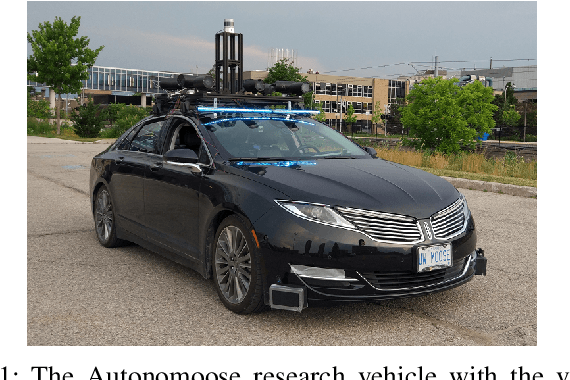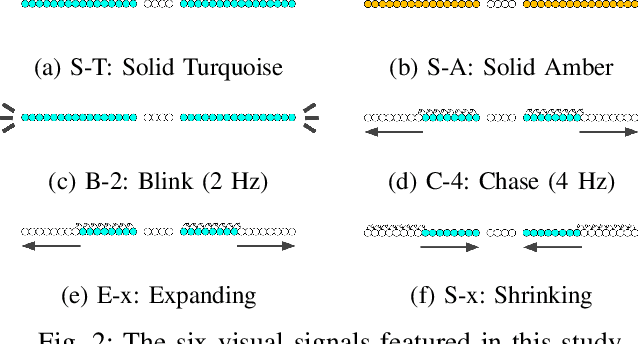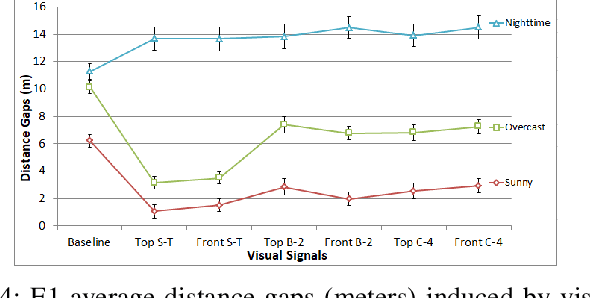Autonomous Vehicle Visual Signals for Pedestrians: Experiments and Design Recommendations
Paper and Code
Oct 10, 2020



Autonomous Vehicles (AV) will transform transportation, but also the interaction between vehicles and pedestrians. In the absence of a driver, it is not clear how an AV can communicate its intention to pedestrians. One option is to use visual signals. To advance their design, we conduct four human-participant experiments and evaluate six representative AV visual signals for visibility, intuitiveness, persuasiveness, and usability at pedestrian crossings. Based on the results, we distill twelve practical design recommendations for AV visual signals, with focus on signal pattern design and placement. Moreover, the paper advances the methodology for experimental evaluation of visual signals, including lab, closed-course, and public road tests using an autonomous vehicle. In addition, the paper also reports insights on pedestrian crosswalk behaviours and the impacts of pedestrian trust towards AVs on the behaviors. We hope that this work will constitute valuable input to the ongoing development of international standards for AV lamps, and thus help mature automated driving in general.
 Add to Chrome
Add to Chrome Add to Firefox
Add to Firefox Add to Edge
Add to Edge